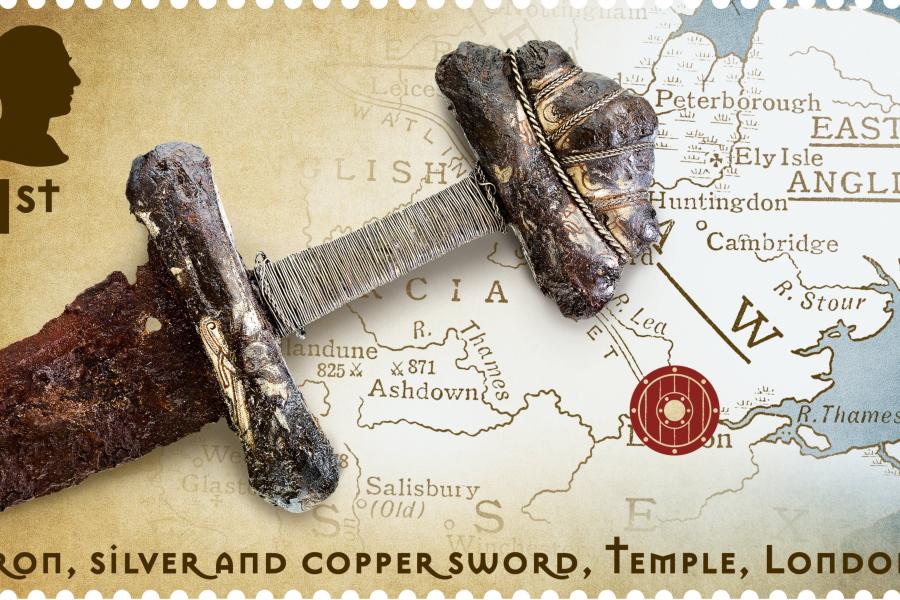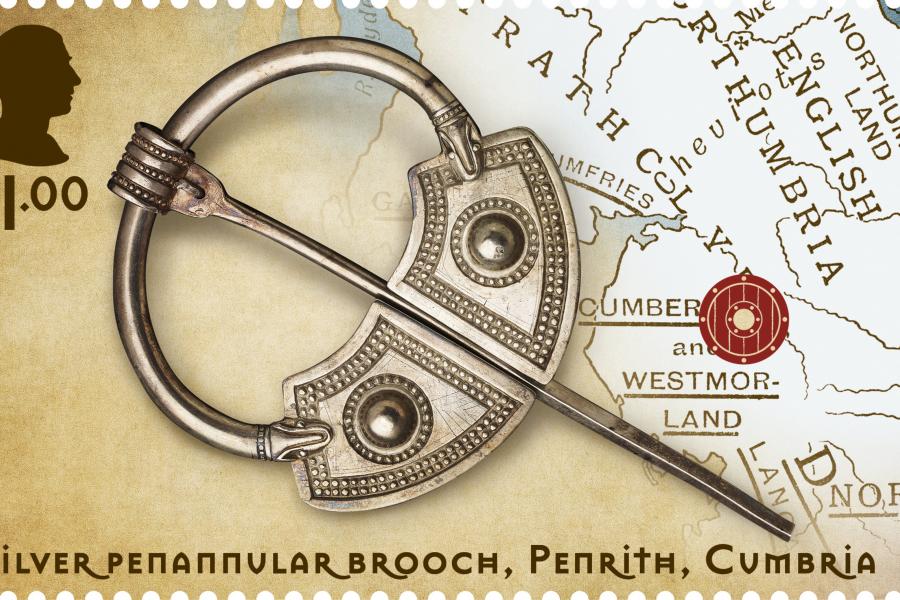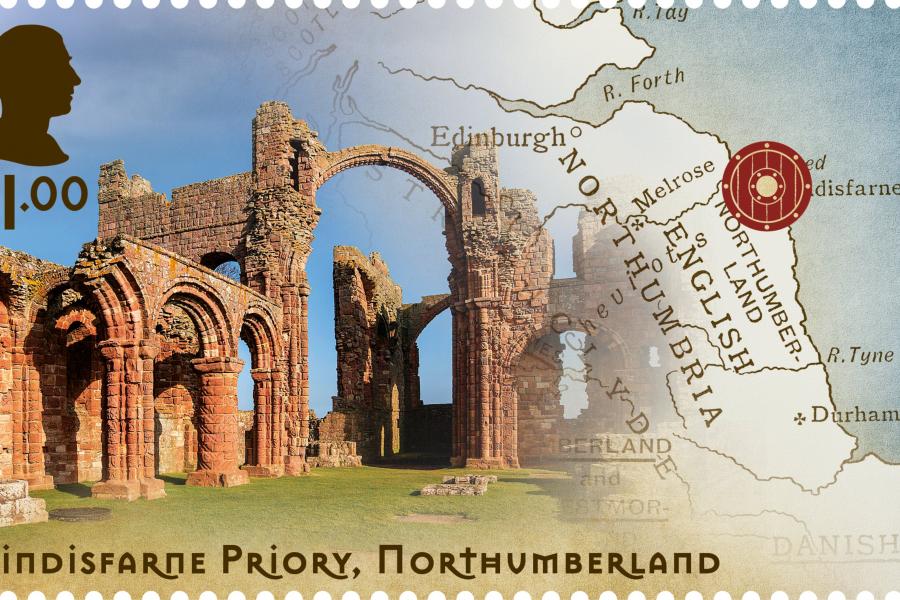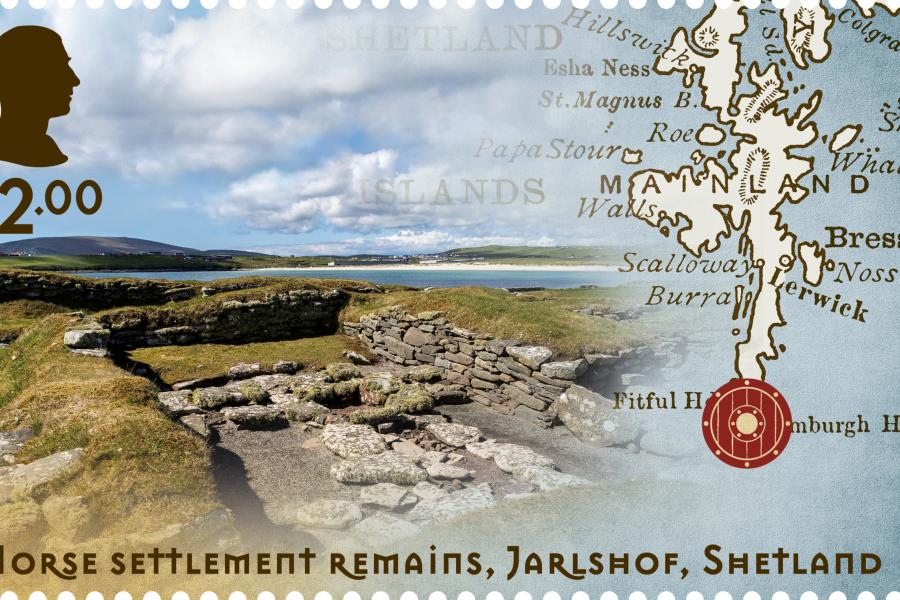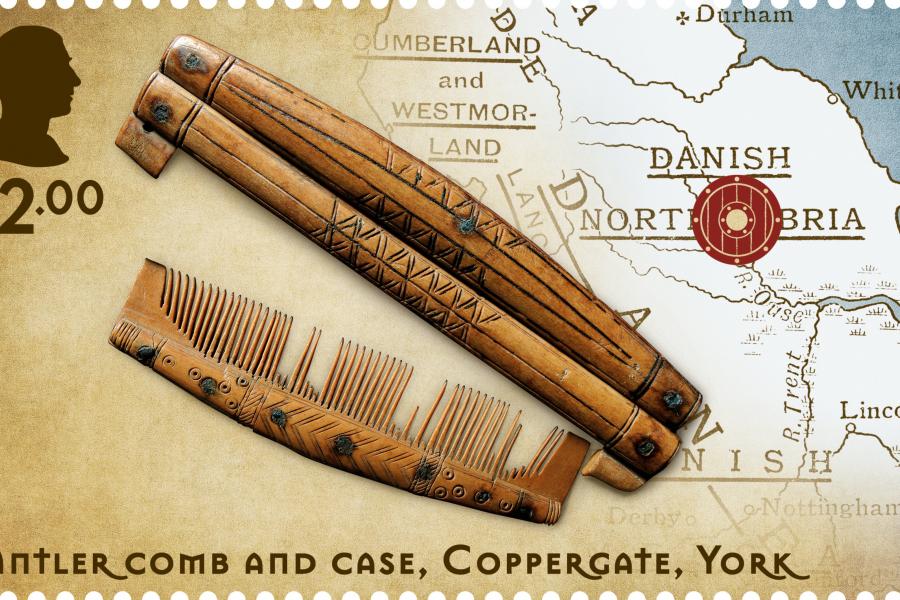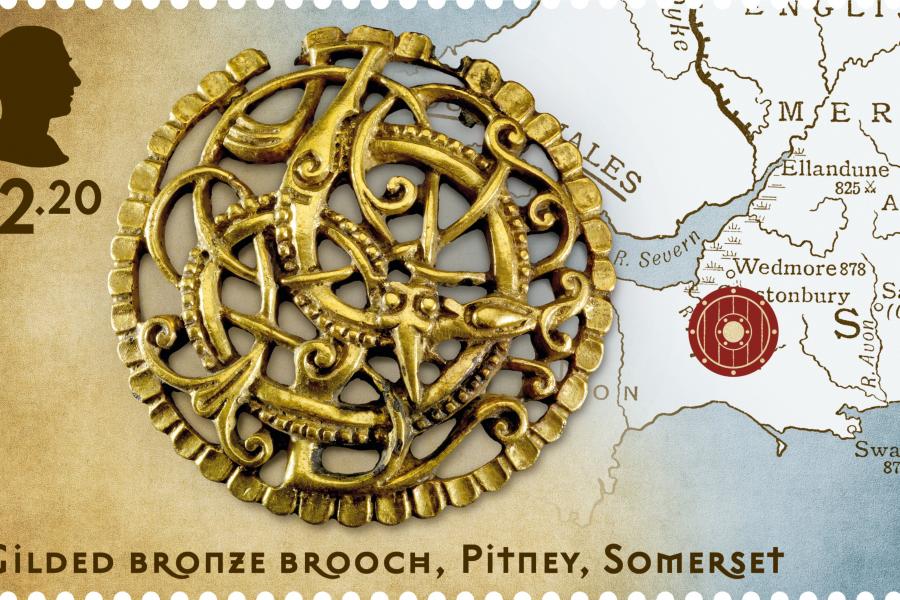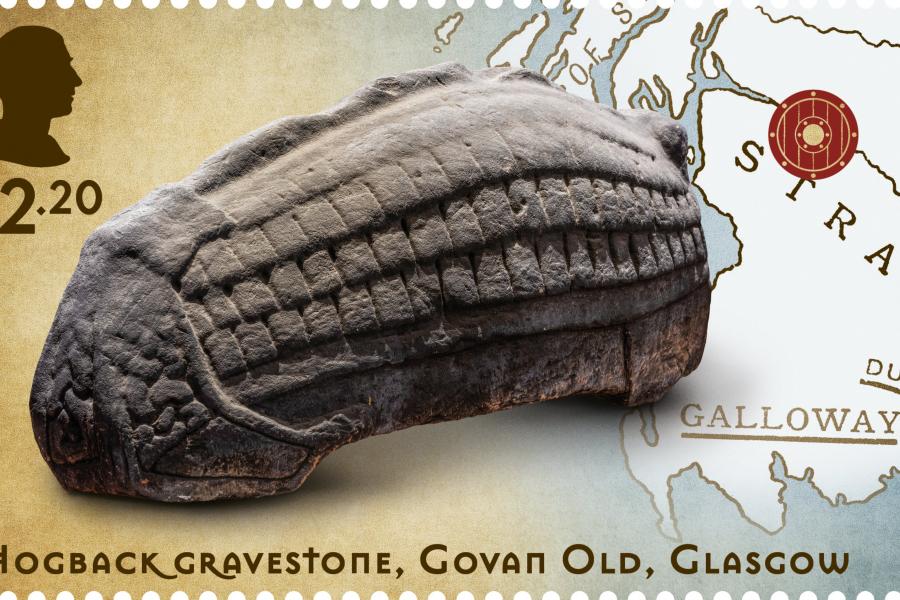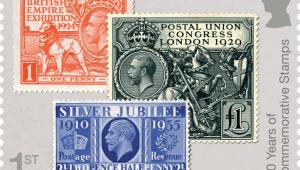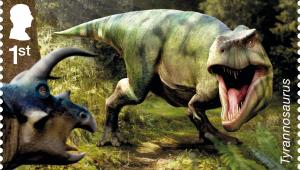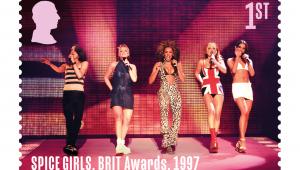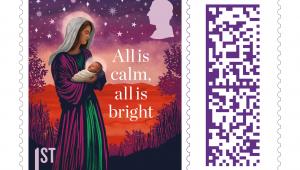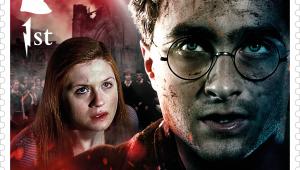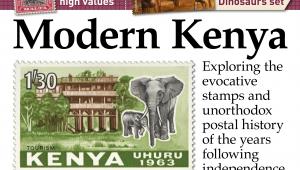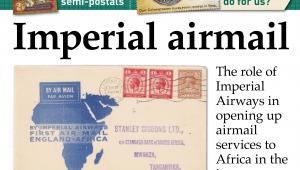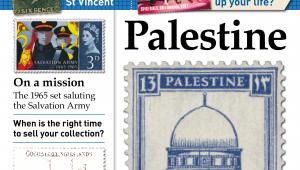Viking Britain
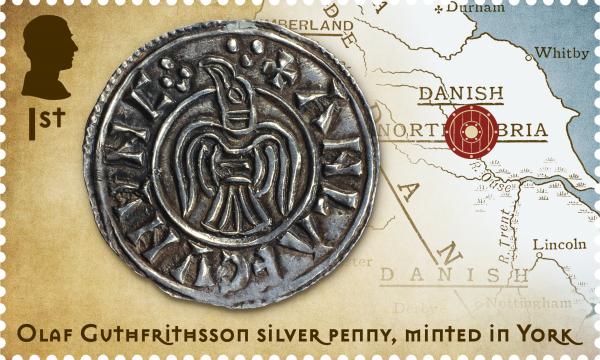
Although the Vikings terrified native Britons, and built up a reputation for rape and pillage, six of the stamps showcase stunning artefacts which have been unearthed around the UK, against the backdrop of a locational map. Another two show archaeological remains.
Viking activity changed the society, economy and political geography of these islands. At first they simply raided and looted coastal communities, taking gold, silver and people back to Scandinavia, but larger fleets and more ambitious warlords later effected large-scale invasions and settlement.
In areas that the Vikings came to dominate, their language and culture became interwoven with those of the Anglo-Saxons and other British peoples. To this day, many British placenames and English words have their origins in Old Norse.
By the early 11th century, kings and earls of Danish and Norwegian heritage ruled the whole of England and large parts of Scotland, and dominated the Irish Sea.
A Danish prince, Cnut, was recognised as King of England from 1016, and he and his sons ruled until 1042. Viking influence in England waned after the Norman conquest of 1066, although the northern and western isles of Scotland maintained close ties to Scandinavia into the late Middle Ages.
Royal Mail’s promotional material for the issue notes that it marks the 40th anniversary of the Jorvik Viking Centre, a popular tourist attraction in York. From 866-954, the city (which the settlers called Jorvik) was a powerhouse of Viking industry, a fact reflected by two of the stamps.
The issue was designed by Studio Up and printed in litho by Cartor Security Printers. The stamps are available in se-tenant pairs.
1st class IRON, SILVER & COPPER SWORD, TEMPLE, LONDON
Viking swords were prized possessions, and this 10th-century example, with fine decorative interlace in silver and copper on the hilt and pommel, would have marked out its owner as a man of high status. It was discovered in the 19th century in London, a city which was attacked and plundered twice during the 9th century.
1st class OLAF GUTHFRITHSSON SILVER PENNY, MINTED IN YORK
A number of Viking kings who ruled from York had coins issued in their names, including Olaf Guthfrithsson from 934–41. The inscription uses the Old English spelling of Olaf (‘Anlaf’) but the Old Norse word for King (‘Cununc’). The design illustrates a bird of prey, or perhaps a raven.
£1.00 SILVER PENANNULAR BROOCH, PENRITH, CUMBRIA
Penannular brooches, typically worn by men as cloak fasteners, had been produced and used in Britain and Ireland for many centuries, but the fashion was adapted to Scandinavian decorative tastes. This 10th-century example is from a hoard of brooches discovered in Cumbria.
£1.00 LINDISFARNE PRIORY, NORTHUMBERLAND
A surprise attack on the monastery at Lindisfarne in 793 marked the beginning of the Viking Age in Britain. Carvings in the ‘Domesday’ stone discovered in its cemetery, dating from the 9th century, are thought to represent scenes from the Book of Revelations, but their depiction of axe-wielding warriors may reflect a more immediate trauma for the resident monks.
£2.00 NORSE SETTLEMENT REMAINS, JARLSHOF, SHETLAND
Located on Sumburgh Head in Shetland, Jarlshof has evidence of human habitation spanning more than 4,000 years. Prominent among the archaeological remains are the stone footings of Norse longhouses, built by the generations of Vikings who lived here from the 9th century onwards.
£2.00 ANTLER COMB & CASE, COPPERGATE, YORK
York under Viking rule was an important economic centre, and excavations have revealed evidence of a wide range of crafts. These include the working of bone and antler into finely decorated household artfects, with combs being a particular specialism.
£2.20 GILDED BRONZE BROOCH, PITNEY, SOMERSET
Found in an area not normally associated with Viking settlement, this 11th-century gilded brooch combines a distinctively Scandinavian style of interlace with Anglo-Saxon decorative elements. It is emblematic of the hybrid culture that was widespread in England by the early 11th century, when Danish kings held the English throne.
£2.20 HOGBACK GRAVESTONE, GOVAN OLD, GLASGOW
Hogbacks are a style of gravestone found in certain areas of Viking settlement in northern England and Scotland but, curiously, not in Scandinavia itself. They were often carved with a decoration that resembles the curving roofline and wooden tiles of the traditional Viking longhouse.
ADDITIONAL PRODUCTS
The presentation pack, written by Thomas Williams, highlights Viking sites of significance and tells the story of the city of Jorvik.
Stamp cards and a first day cover are also available, along with a medal cover featuring a reproduction of a Viking silver penny.
PRICES
Set of 8 stamps £12.90
Presentation pack £13.80
First day cover £16.15
Stamp cards £3.60
VERDICT
COMMEMORATIVE WORTH 4/5
British heritage themes are a welcome part of the stamp programme, and the Viking era has been under-represented to date
QUALITY OF DESIGN 4/5
The combination of artefact, map segment and period lettering is stylish and effective
WOW FACTOR 3/5
This is probably not the kind of issue that grabs public attention, although it will look good in an album
